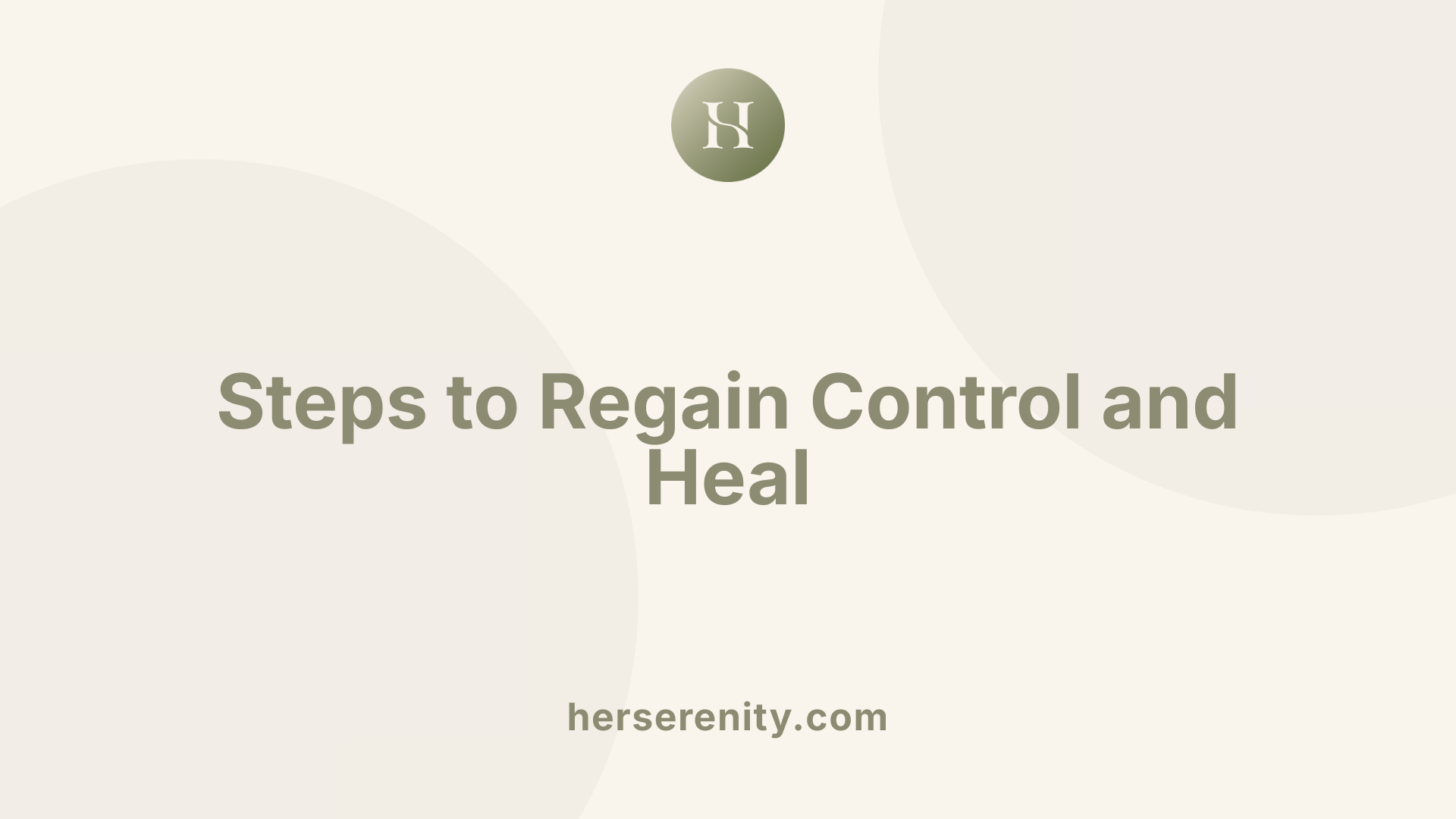How to Navigate Life After Trauma
Finding Healing and Renewal After Traumatic Experiences

Introduction
Experiencing a traumatic event can profoundly affect one's emotional, physical, and mental well-being. While everyone's journey to recovery is unique, common strategies and insights can guide individuals as they navigate life after trauma. This article aims to provide guidance and resources for those seeking to understand, cope with, and recover from traumatic experiences.
Immediate Steps to Take Post-Trauma

What should I do immediately after a traumatic event?
Immediately following a traumatic event, it’s essential to prioritize your emotional well-being. Here are some effective coping strategies:
- Acknowledge Your Feelings: Allow yourself to experience emotions such as fear, anger, or sadness. These feelings are normal responses to trauma.
- Maintain a Routine: Stick to your daily schedule where possible. Routine can provide a sense of normalcy and structure.
- Engage in Healthy Activities: Incorporate regular exercise and enjoyable hobbies into your day to alleviate stress and promote healing.
- Reach Out for Support: Spend time with friends and family. Sharing your experience with those who care about you can offer comfort and understanding.
- Avoid Substance Use: Stay clear of drugs and alcohol, which can exacerbate stress and hinder recovery.
How can support systems help after trauma?
Building a solid support network is crucial in the healing process. Surrounding yourself with supportive friends, family, or even support groups can:
- Provide comfort during difficult moments
- Facilitate discussions about shared feelings or experiences
- Help you feel less isolated and more understood
When should I seek professional help?
If your symptoms persist beyond a few weeks, or if you experience significant difficulty with daily activities, consider reaching out to a mental health professional. Signs that indicate the need for help include:
- Persistent anxiety or depression
- Flashbacks or intrusive memories
- Difficulty sleeping or concentrating
Early intervention from qualified professionals can help navigate the emotional aftermath of trauma and initiate the healing process.
Recognizing Signs of Emotional Trauma

What are common signs of emotional trauma in adults?
Emotional trauma can manifest in various ways, affecting individuals both psychologically and physically. Here are some key signs to look out for:
- Emotional Symptoms: These can include intense feelings of anxiety, fear, anger, guilt, and shame. Individuals may also experience persistent sadness and distress, which significantly impacts their emotional well-being.
- Physical Responses: The body often reacts to trauma with fatigue, headaches, and insomnia. Additionally, changes in appetite may occur as the body struggles to cope with stress.
- Behavioral Changes: Trauma may lead to withdrawal from social situations or avoidance of reminders associated with the traumatic event. This behavior often includes modifications to daily routines or habits that once felt comfortable.
- Cognitive Effects: Many adults find they have difficulty concentrating and may misinterpret current situations as threatening, further complicating their emotional health.
Overall, emotional trauma disrupts relationships, self-esteem, and the ability to function normally in everyday life. Recognizing these signs early is crucial for seeking the necessary support and professional help.
Finding Pathways to Cope and Recover

Acknowledging feelings
Recognizing and accepting your emotions is crucial after experiencing trauma. It's normal to feel a range of emotions, such as fear, sadness, and confusion. Talking about your feelings with trusted friends or family can help in processing these emotions. This acknowledgment is the first step towards healing and can significantly alleviate feelings of isolation.
Physical activity
Engaging in regular physical activity plays a vital role in recovery. Activities like walking, yoga, or simple stretches can promote emotional stability and resilience. Exercise helps release endorphins, which can combat feelings of anxiety and depression following a traumatic incident. Additionally, maintaining a routine that includes physical activity can enhance your overall sense of control and normalcy after a distressing event.
Seeking support
Reaching out for support is essential in coping after witnessing trauma. Whether it’s talking to loved ones, joining a support group, or seeking professional help, connecting with others who understand your experience can offer comfort and validation. Remember that if distressing symptoms persist for more than a month or heavily disrupt your daily life, consulting with a mental health professional is vital for effective recovery.
Effective Recovery Strategies for Emotional Trauma

What are effective strategies to recover from emotional trauma?
Recovering from emotional trauma requires a multifaceted approach. Firstly, acknowledging the trauma and validating your feelings is crucial. This validation lays the groundwork for emotional processing and allows for healing to begin. Surrounding yourself with a support network of friends and family can significantly combat feelings of isolation, reminding you that you are not alone in this journey.
Professional therapy is another cornerstone for emotional recovery. Therapeutic options such as Cognitive Behavioral Therapy (CBT) or Eye Movement Desensitization and Reprocessing (EMDR) are beneficial as they offer targeted support tailored to overcoming trauma.
How important is self-care in trauma recovery?
Self-care plays a vital role in rebuilding after trauma. Regular exercise, a balanced diet, mindfulness practices, and ensuring adequate sleep contribute to overall well-being and foster resilience against stress.
Engaging in hobbies or activities that bring joy can also facilitate emotional recovery, creating opportunities for feelings of pleasure and expression. The key is to listen to your body and prioritize what feels healing during this time.
How can managing triggers aid in recovery?
Identifying and managing triggers is essential for coping with trauma responses in daily life. Triggers may evoke intense emotional reactions or flashbacks. By recognizing them early, you can adopt grounding techniques or your chosen coping strategies to maintain balance.
Ultimately, remember that recovering from trauma is a non-linear process that takes time and patience. Celebrate small victories as you navigate this journey toward healing.
Healing Past Life Trauma

How can past life trauma be healed?
Healing past life trauma can involve a multifaceted approach. Here are some effective strategies to consider:
Mindfulness and Meditation: Engaging in mindfulness techniques allows individuals to reconnect with their emotions and gain insight into their feelings. Practices such as meditation can foster a sense of calm and help in processing traumatic memories. By focusing on the present moment, individuals can also reduce anxiety and enhance emotional regulation.
Creative Outlets: Creative expression plays a crucial role in healing. Activities like art, writing, or music allow individuals to explore and articulate unresolved feelings. These creative practices can facilitate emotional processing and help individuals work through complex trauma-related emotions.
Support Groups: Joining a support group offers a valuable opportunity for individuals to share their experiences with others who have faced similar situations. This connection fosters a sense of belonging and understanding, which can be incredibly healing. Community healing circles or facilitated discussions can also provide encouragement and practical tips for recovery.
Incorporating additional methods such as holistic therapies, like Reiki or acupuncture, may complement these strategies, promoting overall well-being and facilitating deeper healing.
Understanding the Stages of Trauma Recovery
What are the 4 stages of trauma recovery?
The recovery process from trauma unfolds in four primary stages:
Safety and Stabilization
This initial stage centers on creating a safe environment, both physically and emotionally. Individuals work on developing coping strategies to manage stress responses. This may include therapy, establishing routines, and prioritizing self-care.Remembrance and Mourning
In this stage, individuals confront and process their traumatic experiences. It involves acknowledging and addressing the emotions related to trauma, such as fear, anger, and sadness, which are critical for healing.Reconnecting and Integrating
This stage focuses on rebuilding relationships and forming a new identity that incorporates the trauma without allowing it to dictate one’s life. Individuals work on reintegrating themselves into social settings and developing supportive connections.Consolidation and Resolution
Lastly, this stage includes integrating the trauma into one’s life story, leading to closure and a renewed sense of purpose. It marks a path toward resilience and personal growth, enabling individuals to set future goals with optimism.
Emotional Processing
Processing emotions is vital in each stage. It allows individuals to recognize their feelings related to the trauma, which is essential for moving forward and healing effectively.
Rebuilding Relationships
As individuals progress through recovery, the reintegration of relationships plays a crucial role. This includes reaching out to friends and loved ones for support, fostering connections that can significantly aid in healing.
Managing Traumatic Memories and Triggers
How can I effectively deal with traumatic memories and triggers?
To effectively manage traumatic memories and triggers, the first step is identifying what those triggers are. Triggers can be both internal—like specific thoughts or feelings—and external, such as places, people, or sounds associated with the trauma. Understanding these can help you prepare to handle your reactions to them.
Identifying Triggers
It's crucial to keep a journal or take notes on situations that provoke strong emotional responses. This will allow you to track patterns and recognize specific triggers over time. By illuminating these triggers, you can create a more tailored approach to your coping strategies.
Grounding Techniques
Employing grounding techniques can help soothe your nervous system during distressing moments. Techniques such as deep breathing exercises, mindfulness practices, or focusing on your current sensory experiences can significantly aid in managing anxiety and flashbacks. Some people find benefits in physical activities, like holding a comforting object or walking to stay anchored in the present.
Professional Therapies
Additionally, engaging in trauma-focused therapies—such as Eye Movement Desensitization and Reprocessing (EMDR) or cognitive-behavioral therapy—provides structured support for processing and coping with traumatic memories. These therapeutic approaches not only help individuals process past trauma but can also equip them with skills to manage ongoing triggers. Seeking professional help and maintaining a robust support system are essential steps in the healing journey.
| Strategy | Description | Benefits |
|---|---|---|
| Identifying Triggers | Track reactions to specific situations or stimuli | Tailored coping strategies |
| Grounding Techniques | Use mindfulness, deep breathing, or sensory experiences | Reduce anxiety and enhance focus |
| Professional Therapies | Engage in EMDR or cognitive-behavioral therapy | Structured support for processing |
Typical Responses to Trauma
What are typical trauma response behaviors?
Individuals responding to trauma often exhibit a complex range of emotional, physical, and behavioral reactions. These reactions can significantly affect their daily lives and interpersonal relationships.
Emotional Reactions:
After experiencing a traumatic event, common emotional responses include fear, anxiety, anger, sadness, and feelings of helplessness. Many people report confusion and shock, processing a sudden disruption of their safety and security. It's crucial to allow oneself to experience these emotions, as suppressing them can hinder recovery.
Physical and Behavioral Responses:
Physically, trauma can manifest in various ways, such as fatigue, headaches, sleep disturbances, and heightened startle responses. Behaviors may include avoiding reminders of the trauma, withdrawing socially, and experiencing difficulty with concentration. The body's instinctive reactions—fight, flight, freeze, or fawn—play a pivotal role in how individuals cope with these intense experiences.
Coping Mechanisms:
Effective coping strategies following trauma can help manage these responses. Individuals are encouraged to maintain regular routines and engage in physical activity, such as exercise, which aids recovery. Utilizing relaxation techniques, like mindfulness and yoga, promotes emotional healing and reduces stress. Seeking support from trusted friends or participating in support groups can also provide comfort and normalize the experience of distress.
Emotions, Behaviors, and Coping Strategies
| Response Type | Examples | Coping Strategies |
|---|---|---|
| Emotional Responses | Fear, anxiety, sadness, anger | Express feelings, talk to trusted friends |
| Physical Responses | Fatigue, disturbed sleep, headaches | Engage in exercise, practice relaxation techniques |
| Behavioral Response | Avoidance, withdrawal, difficulty concentrating | Maintain routines, join support groups |
Overall, understanding and addressing these varied responses can facilitate effective recovery from trauma.
Achieving a Fulfilling Life After Trauma
How can I live a happy life after experiencing trauma?
Living a happy life after trauma is achievable by incorporating healthy coping strategies and establishing strong support systems. Here are some effective ways to navigate this journey:
Support Systems: Surround yourself with trusted friends and family who can provide emotional support. Connection is vital; it can help alleviate feelings of isolation and fear. Don't hesitate to reach out to those who care about you, as sharing experiences can foster understanding and comfort.
Routine and Self-Care: Maintaining a daily routine can support emotional stability. Focus on consistent meals, exercise, and sleep schedules. Engaging in physical activities and practicing relaxation techniques like mindfulness or yoga can significantly improve mental health and promote healing. Prioritize self-care, ensuring you meet basic needs and allow time for rest and enjoyment.
Seeking Professional Help: If feelings of distress persist or interfere with daily life, it's crucial to consult a mental health professional. Therapy options, including counseling and support groups, provide an avenue for processing trauma and developing coping strategies. Seeking professional guidance is an important step in your recovery path.
Continuing to work on these areas can cultivate joy and resilience in life despite past trauma.
Conclusion
Navigating life after trauma is a profound challenge, but with supportive strategies, professional help, and a strong personal network, healing is achievable. Each individual's journey is unique, and embracing your path with patience and self-compassion is vital. Remember that recovery from trauma is a journey toward renewed strength and purpose, and with the right tools and support, a fulfilling life is within reach.
References
- Trauma - reaction and recovery | Better Health Channel
- How to Cope with Traumatic Events - HelpGuide.org
- Coping With Traumatic Events - National Institute of Mental Health
- A Fresh Start: Life After Trauma - Carolina Counseling Services
- Self-Care and Recovery After Trauma - Mental Health - WebMD
- Nine Ways To Navigate Your Trauma - MyWellbeing
- Types of mental health problems | coping with trauma - Mind

































































































